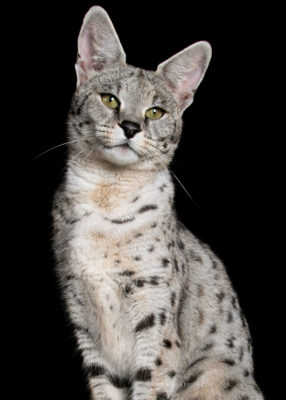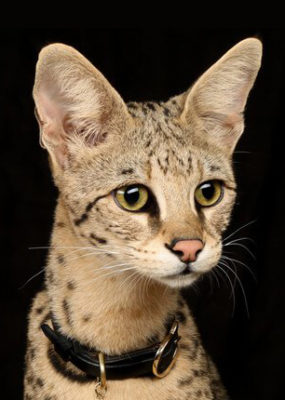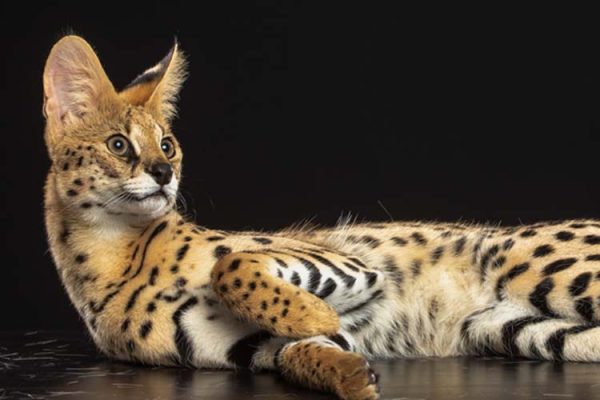Savannah
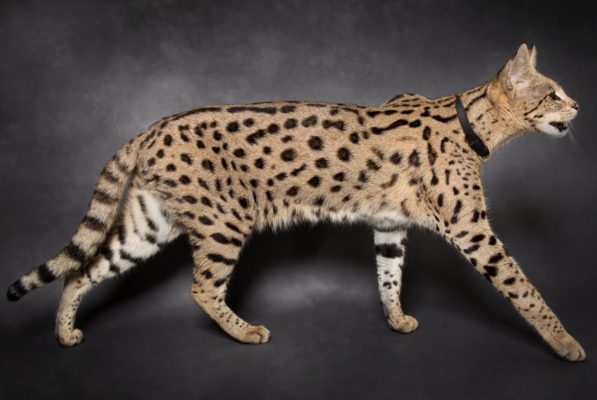
The Savannah is an intelligent and active breed that requires a lot of physical activity and mental stimulation, so this cat needs to provide lots of toys and puzzles and climbing areas so that they always have something to occupy themselves with. These cats are quite independent and sometimes stubborn. You should not argue with them, as they may get offended and not make contact for a long time.
Table of Contents
Breed Information
| Origin | United States |
| Size | Males 35-60 cm Females 35-55 cm |
| Weight | Males 10-15 kg Females 7-10 kg |
| Fur Type | Short-haired |
| Color | Chocolate, golden, tabby-cinnamon, brown, silver (the distinctive feature of all colors – the presence of dark spots of different sizes) |
| Lifestyle | Indoors |
| Lifespan | 12-20 years |
| FIFe Classification | – |
| WCF Classification | – |
| TICA Classification | SV |
| Group | Short-haired cats, rare cats, apartment cats (docile cats) |
| Price | $900-7000 |
Breed Photos
Origin History
The appearance and character of the Savannah cat speak of its exotic origins. This breed’s relatives are Serval cats, which lived as early as 1300 BC in Ancient Egypt. This breed is described in the Egyptian cultural heritage – in myths and legends, which suggest that Servals had a special place in the ancient Egyptians’ hearts. Even though the Egyptians were very fond of this breed, they never domesticated Serval cats. Approximately in the XVIII-XIX centuries, Servals were brought to other continents specifically for breeding.
In the mid-1980s, American breeder Judy Frank got herself a pet of the serval breed named Ernie. It was a male cat that she crossed with a Siamese cat. The result was the birth of one kitten, which became the first Savannah breed kitten. Much of Savannahs’ early breeding is attributed to Joyce Srawf and Patrick Kelly, who introduced standards for the breed in the 1990s. Shortly after that, they submitted the breed standard to the International Cat Association (TICA), which officially recognized it in 2012.
Appearance
The Savannah is elegant and slender, with long legs, a graceful neck, and tall, large ears. The long limbs make these cats look quite large. There are different generations of the Savannah breed, which are relatively similar, but the first generation is larger than subsequent generations – its representatives have retained the large size of the serval. The first generation of the Savannah breed is the rarest.
Although a Savannah is not a small cat, its head is small. It has a convex nose, almond-shaped eyes, and ears rounded at the tips. Savannah’s eyes may be grass, copper, or yellow. These pets’ gaze resembles that of a predator, which is not surprising given their wild origins.
The silky coat and amazing coloration make both this cat special and something the Savannah cat can be proud of. The coat is smooth and mostly short with a color that resembles that of a leopard. Coat colors can vary, but the most common are chocolate, golden, tabby-cinnamon, brown, and silver. A distinctive feature of the color is the presence of dark-colored spots of different sizes.
Character
The Savannah is an intelligent and active breed that requires a lot of physical activity and mental stimulation, so this cat needs to provide lots of toys and puzzles and climbing areas so that they always have something to occupy themselves with. These cats are quite independent and sometimes stubborn. You should not argue with them, as they may get offended and not make contact for a long time.
Savannahs are calmer and more affectionate compared to their breed, the serval. At the same time, they have retained their wild ancestors’ hunting instinct, so you should not get such cats if there are small pets such as rabbits, guinea pigs, birds, or fish in the house. The cat is wary of strangers. It does not show aggression to them but ignores them and looks with suspicion.
Care
The Savannah is a breed that is not prone to shedding, so it requires less maintenance than most other breeds. It should still be brushed weekly, however, to keep its coat healthy and silky.
Savannah’s nails should be trimmed as needed, usually weekly, so they don’t break when the cat clings to the carpet or furniture. You need to train Savannah to trim her claws at an early age to avoid problems when she gets older.
It is important to check the ears weekly for infections, which show unusual redness, unpleasant odor, and discharge. The ears should be wiped with a cotton pad moistened with a mild cat cleanser to avoid problems.
To reduce the risk of going to the vet for expensive dental treatment, you should brush your teeth at least every other day to avoid tartar and gum disease.
Education
This breed may not be the best choice for the novice owner. Savannahs require a lot of attention and can at times exhibit challenging behaviors that require an experienced hand to train properly. Savannahs train best with short, frequent drills and reinforcement with verbal praise and treats. Repetition and consistency are key to training a Savannah.
It’s best to start with basic commands that will teach the Savannah cat domestic manners. As part of their training, they should be taught to stay away from dangerous situations – such as fire or sharp objects in the kitchen. Savannahs also need daily exercise in addition to standard house play.
Common Diseases
Experts call Savannah cats one of the healthiest domestic breeds. These cats are not prone to genetic diseases, and they rarely have colds or digestive problems. To keep your cat healthy, it is important to follow a vaccination schedule. Worming vaccinations are especially important.
You should see a veterinarian right away to prevent complications from viral diseases at the slightest suspicion of Savannah malaise. Vomiting, diarrhea, lethargy, refusal of food and water, and elevated body temperature are alarming problems.
Nutrition
Savannah cats have the same nutritional needs as any domestic cat. It is recommended to feed the cat a mixed diet – a combination of dry or wet factory-fed food and natural products. It is believed that Savannah cats are at high risk of taurine deficiency, a vitamin found in meat. Therefore, the cat should be given a sufficient amount of meat from natural products, supplemented with cereals, greens, and vegetables. It is necessary to provide the cat with fresh, clean water.
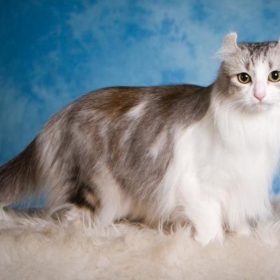 American Curl Longhair
American Curl Longhair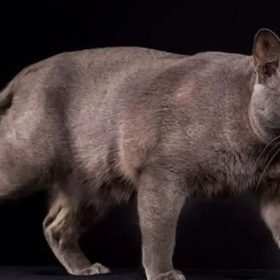 Korat
Korat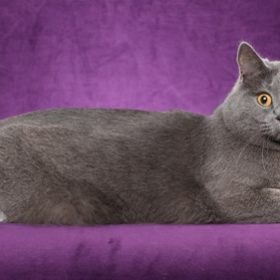 Chartreux
Chartreux Thai
Thai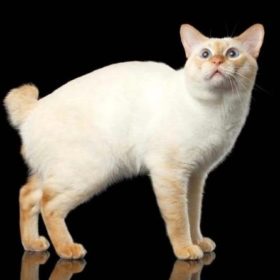 Mekong Bobtail
Mekong Bobtail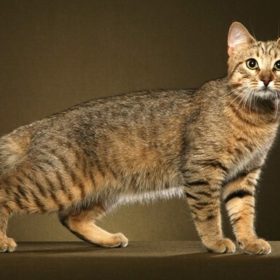 Pixie-bob Shorthair
Pixie-bob Shorthair